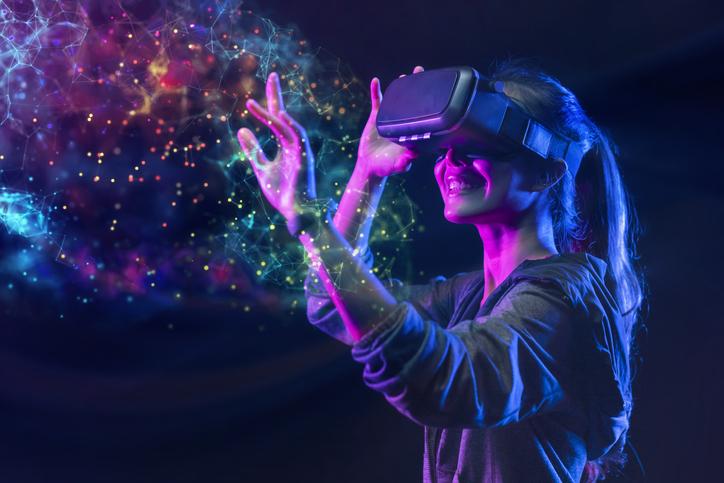VR/AR in Education: How Effective Are Virtual and Augmented Reality for Learning?
Introduction
The digital revolution has transformed the way we live, work, and, crucially, the way we learn. Virtual Reality (VR) and Augmented Reality (AR) are leading innovations driving change in education. By blending the boundaries between the physical and virtual worlds, these technologies offer immersive and engaging learning experiences. But how effective are VR and AR for learning? In this comprehensive guide, we’ll explore the impact of VR/AR in education, including their benefits, real-world case studies, expert insights, and practical tips for educators.
What Is VR/AR and How Is It Used in Education?
Defining Virtual and Augmented Reality in Learning
virtual Reality (VR) immerses users in a computer-generated environment using devices such as headsets. Students can interact with 3D worlds, simulations, and labs as though they are part of the scene.
Augmented Reality (AR) overlays digital data—images, videos, or 3D models—onto the real world using smartphones, tablets, or specialized glasses. Learners see “enhanced” versions of their environment as they study.
Classroom Applications of VR/AR
- Science simulations: Explore anatomy, chemistry labs, or physics concepts interactively.
- Ancient reconstructions: Travel back in time to ancient civilizations, historic events, or famous sites.
- Language learning: Practice dialog with virtual characters or immersive scenarios.
- mathematics visualization: manipulate geometric shapes and solve equations in 3D space.
- Special education: Provide customized, sensory-kind environments for diverse learners.
Benefits of VR/AR in Education
Introducing virtual and augmented reality in the classroom can revolutionize learning in several ways. Let’s dive into the top advantages:
- Enhanced engagement: Immersive experiences boost student interest and motivation. VR/AR makes lessons interactive and dynamic,transforming passive learners into active participants.
- Deeper Understanding: Visualizing abstract concepts, like molecular structures or complex machinery, fosters comprehension and retention.
- Safe Learning Environments: Simulated labs and field trips allow students to experiment, make mistakes, and learn in a risk-free setting.
- Personalized Learning: Educators can tailor experiences based on individual learning styles and needs.
- Accessibility: AR content can be adapted for different ages, skills, and abilities, ensuring inclusive education.
- Collaboration Opportunities: Students can connect and cooperate in shared virtual spaces, even across geographic boundaries.
How Effective Are VR/AR for Learning?
Latest research and Statistics
The growing number of academic studies and pilot programs show promising results for VR/AR learning effectiveness:
- Retention Rates: Research from the University of Maryland found that VR-based learning can improve information recall by up to 30% compared to customary classroom methods.
- Student Motivation: A recent report published in Computers & Education showed that students using AR apps for science education exhibited higher motivation and curiosity.
- Skill Building: Medical students using VR simulations demonstrated improved procedural skills and confidence prior to real-world practice.
- SEN Support: VR/AR platforms are proven to help students with dyslexia,ADHD,or autism better engage with content.
Limitations to Consider
- Cost and accessibility: High-quality VR equipment can be pricey, although costs are dropping as technologies advance.
- Teacher training: Effective integration requires professional growth for educators.
- Screen fatigue: Extended VR/AR sessions may cause discomfort; balance is essential.
Case Studies: VR/AR in Action
stanford University’s Virtual Labs
In Stanford’s engineering program, VR simulations allow students to experiment with circuitry, hydraulics, and mechanical systems in a virtual lab. The program has resulted in higher test scores,improved engagement,and reduced equipment costs.
Google Expeditions at K-12 Schools
Classrooms around the world are using Google Expeditions, an AR/VR app, for immersive field trips. Students have explored the Great Barrier Reef, Mars, and inside the human body—without ever leaving their classroom.
Medical Training with Oculus Rift
Hospitals and universities employ VR headsets for anatomy tutorials, surgical training, and diagnostics. trainee doctors report improved confidence and dexterity after practicing in a safe,repeatable virtual environment.
Firsthand Experience: Voices from Students and Educators
“VR science classes made me feel like I was actually inside a cell. I remembered details I woudl have missed with just textbooks.”
– Sarah, High School Student
“Setting up AR apps took some work, but the excitement from my students made it worthwhile. Their test scores rose, and classroom discussions flourished.”
– James, science teacher
Numerous educators note that VR/AR learning tools do more than just entertain—they fundamentally change how material is absorbed and understood.
Practical Tips: How to Integrate VR/AR in Education
- Start Small: Begin with free or low-cost AR education apps for tablets and smartphones before investing in VR headsets.
- Invest in Training: Encourage professional development and workshops for teachers and IT staff.
- Align with Curriculum: Use VR/AR tools that complement existing lesson plans and learning goals.
- Monitor Student Wellbeing: Limit screen time, check for motion sickness, and provide breaks.
- Foster Collaboration: Use shared virtual spaces for group projects and discussions.
- gather Feedback: Continuously evaluate the impact through surveys and academic performance.
Conclusion: The Future of VR/AR in learning
The effectiveness of VR/AR in education is increasingly clear—students are more engaged, motivated, and confident thanks to immersive learning experiences. While challenges like cost, training, and accessibility remain, ongoing advances and creative implementations are making these technologies more attainable for schools worldwide.
As educators, administrators, and tech providers collaborate to integrate virtual and augmented reality for learning, the classroom of the future looks more interactive, inclusive, and impactful than ever before. The key is to use VR/AR strategically—not as a gimmick, but as a thoughtfully embedded educational tool that amplifies understanding and fosters lifelong curiosity.
Ready to take the next step? Explore the latest VR/AR education resources and start your own immersive learning journey today!

